A History of Fly Fishing for Trout is a fly fishing book written by John Waller Hills published in London in 1921.
A History of Fly Fishing for Trout is a fly fishing book written by John Waller Hills published in London in 1921.
A History of Fly Fishing for Trout is the first book to trace the history of fly fishing from its very beginning, with chapters on Early Sporting Literature, Early Fly Fishing in France, and identifying all the artificial flies mentioned by early writers. The book includes a useful bibliography for scholars interested in further historical research.
It covers the period from the close of the 15th century to the beginning of the 20th, from the Treatyse to Andrew Lang. The story is very well told and must have involved considerable research. Generous in his appreciations, he can always be relied upon to give an unbiased judgement. The book sets a high standard and one can refer to him with confidence on moot points in angling literature on trout fly-fishing. [1]
All three of these writers—Robb, Hills and Marston—get at the real meaning of the old writers, quote them and characterize them, point out the significance of their contributions, and show both where they are still valid and where later developments have improved them. [2]
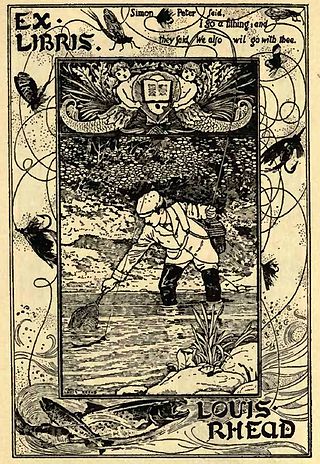
This general annotated bibliography page provides an overview of notable and not so notable works in the English language regarding the sport of fly fishing, listed by year of first publication. Although not all the listed books are devoted exclusively to fly fishing, all these titles contain significant fly fishing content. The focus of the present page is on classic general texts on fly fishing and its history, together with notable public or university library collections dedicated to fly fishing.

Frederic Maurice Halford, pseudonym Detached Badger, was a wealthy and influential British angler and fly fishing author. Halford is most noted for his development and promotion of the dry fly technique on English chalk streams. He is generally accepted as "The Father of Modern Dry Fly Fishing". John Waller Hills, A History of Fly Fishing for Trout (1921) called Halford "The Historian of the Dry Fly".

George Edward MacKenzie Skues, usually known as G. E. M. Skues (1858–1949), was a British lawyer, writer and fly fisherman. He invented modern-day nymph fishing. This caused a controversy with the Chalk stream dry fly doctrine developed by Frederic M. Halford. His second book, The Way of a Trout with a Fly (1921) is considered a seminal work on nymph fishing. According to Andrew Herd, the British fly fishing historian, Skues:
was, without any doubt, one of the greatest trout fishermen that ever lived. His achievement was the invention of fly fishing with the nymph, a discovery that put a full stop to half a century of stagnation in wet fly fishing for trout, and formed the bedrock for modern sunk fly fishing. Skues' achievement was not without controversy, and provoked what was perhaps the most bitter dispute in fly fishing history.

Minor Tactics of the Chalk Stream and Kindred Studies is a fly fishing book written by G. E. M. Skues published in London in 1910. Minor Tactics was Skues's first book and set the stage for his ascendancy as the inventor of nymph fishing for trout.
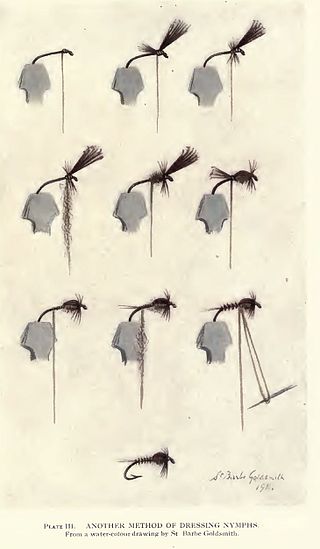
The Way of a Trout with a Fly and Some Further Studies in Minor Tactics is a fly fishing book written by G. E. M. Skues published in London in 1921. This was Skues's second book after Minor Tactics of the Chalk Stream (1910).

A Concise Treatise on the Art of Angling- Confirmed by Actual Experiences and Minute Observations to Which is Added the Compleat Fly-Fisher is a fly fishing book written by Thomas Best, first published in London in 1787.
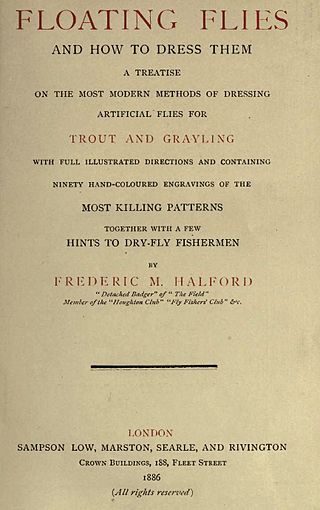
Floating Flies and How to Dress Them - A Treatise on the Most Modern Methods of Dressing Artificial Flies for Trout and Grayling with Full Illustrated Directions and Containing Ninety Hand-Coloured Engravings of the Most Killing Patterns Together with a Few Hints to Dry-Fly Fishermen is a fly fishing book written by Frederic M. Halford published in London in April 1886 by Sampson Low. A deluxe edition on large paper sold out before publication and the trade edition of 500 nearly so.

Favorite Flies and Their Histories - With many replies from practical anglers to inquiries concerning how, when and where to use them-Illustrated by Thirty-two colored plates of flies, six engravings of natural insects and eight reproductions of photographs is a fly fishing book written by Mary Orvis Marbury published in Boston in April 1892 by Houghton Mifflin. It was considered by most fly fishers as the standard reference on flies in its era.

The Salmon Fly - How to Dress It and How to Use It is a fly fishing book written by George M. Kelson published in London in 1895 by Messers. Wyman & Sons, Limited. This Victorian guide to fly fish tying built up the illusion that angling for salmon required feathers of exotic bird species.

A Book on Angling – Being a complete treatise on the art of angling in every branch is a work of angling literature with significant fly fishing content written by Francis Francis, angling editor to The Field and published in London in 1867 by Longmans, Green and Company.

Blacker's Art of Fly Making - comprising angling and dyeing of colours with engravings of Salmon and Trout flies shewing the process of the gentle craft as taught in the pages with descriptions of flies for the season of the year as they come out on the water is a work of fly tying literature with significant fly fishing content written by William Blacker, a London tackle dealer and first published in London in 1842 by George Nichols. The 1842 and 1843 editions were only 48 pages while, the 1855 edition was considerably expanded by Blacker with hand-painted, colored illustrations and 252 pages.
Scientific Anglers is a fly fishing company specializing in a variety of fly fishing tackle products. Scientific Anglers is noted for the invention of PVC coated floating fly line and continued innovations in fly line cores and coatings. Scientific Anglers's products currently include a variety of lines, fly boxes, reels, and fly fishing educational materials.
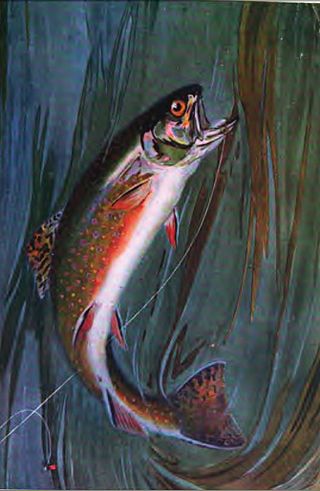
This annotated bibliography is intended to list both notable and not so notable works of English language, non-fiction and fiction related to the sport of fly fishing listed by year published. Although 100% of any book listed is not necessarily devoted to fly fishing, all these titles have significant fly fishing content. Included in this bibliography is a list of species related fly fishing literature.

This annotated bibliography is intended to list both notable and not so notable works of English language, non-fiction and fiction related to the sport of fly fishing listed by year published. Although 100% of any book listed is not necessarily devoted to fly fishing, all these titles have significant fly fishing content. Included in this bibliography is a list of fly tying, fly tackle, regional guides, memoirs, stories and fly fishing fiction related literature.

Dry-Fly Fishing in Theory and Practice (1889) is British author and angler Frederic M. Halford's second and most influential book on dry fly fishing. It followed Floating Flies and How to Dress Them (1886) and this pair of books initiated some 40 years of a rigid, and sometimes dogmatic school, the Halfordian school, of dry fly fishing, especially on English chalk streams. The work also played a significant role in the development of dry-fly fishing in America.
George Selwyn Marryat was a country gentleman and British angler most noted for his relationship with F. M. Halford, Francis Francis and the development of dry-fly fishing on the chalk streams of southern England. Upon his death in 1896, he became known as the "Prince of Fly Fishers".

The Fly-Fisher's Entomology, Illustrated by Coloured Representations of the Natural and Artificial Insect and Accompanied by a Few Observations and Instructions Relative to Trout-and-Grayling Fishing, first published in 1836 by Alfred Ronalds (1802–1860), was the first comprehensive work related to the entomology associated with fly fishing. Although the work was Ronalds' only book, it was published in 11 editions between 1836 and 1913 and has been extensively reprinted in the last 100 years.

Fly Fishing, first published in 1899 by English author and diplomat Edward Grey, 1st Viscount Grey of Fallodon (1862–1933), is a book about fly fishing English chalk streams and spate rivers for trout and salmon. It includes reminisces about the author's fly fishing experiences on Hampshire rivers. The book was in print for nearly 50 years and has been extensively reprinted in the 21st century.
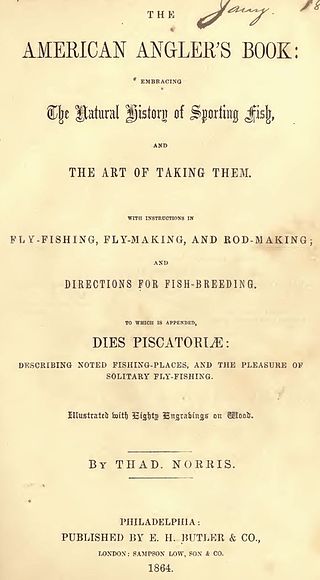
The American Angler's BookEmbracing the Natural History of Sporting Fish and the Art of Taking Them with Instructions in Fly-Fishing, Fly-Making, and Rod-Making and Directions for Fish-Breeding, to which is appended Dies Piscatoriae Describing Noted Fishing-Places, and The Pleasure of Solitary Fly-Fishing is an early American angling book by Thaddeus Norris (1811-1877) first published in 1864. Norris was known as Uncle Thad and commonly referred to in American angling history as "The American Walton".